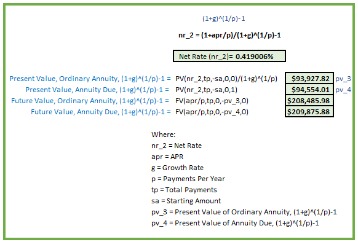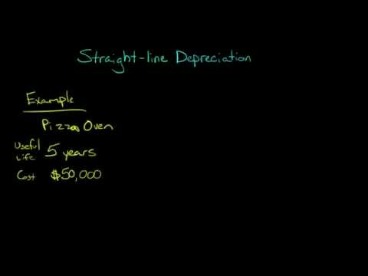
Businesses can use one of two methods to report a bad debt on their taxes, the specific charge-off method and the nonaccrual-experience method. The IRS provides detailed instructions on both methods in its Publication 535, Business Expenses. The business only has to report the amount of the recovery equal to the amount it previously deducted. If a portion of the deduction did not trigger a reduction in the company’s tax bill, it does not have to report that part of the recovered funds as income. Bad debt is all but inevitable, as companies will always have customers who won’t fulfill their financial obligations.

In some cases, however, companies may not recover the amount owed by customers. Nonetheless, accounting standards may require companies to record a bad debt expense instead. However, it does not guide companies on whether it should be a part of operating expense or the cost of sales. Credit sales allow companies to sell goods or services for future promised payments. Instead, the company sends an invoice to the customer requesting a settlement.
Bad Debt Allowance Method
The allowance for doubtful accounts resides on the balance sheet as a contra asset. Meanwhile, any bad debts that are directly written off reduce the accounts receivable balance on the balance sheet. This expense is called bad debt expenses, and they are generally classified as sales and general administrative expense. Though part of an entry for bad debt expense resides on the balance sheet, bad debt expense is posted to the income statement. Recognizing bad debts leads to an offsetting reduction to accounts receivable on the balance sheet—though businesses retain the right to collect funds should the circumstances change.
What is liability car insurance? It may not cover what you would expect – CNBC
What is liability car insurance? It may not cover what you would expect.
Posted: Thu, 06 Apr 2023 07:00:00 GMT [source]
Calculating your bad debts is an important part of business accounting principles. Not only does it parse out which invoices are collectible and uncollectible, but it also helps you generate accurate financial statements. When a company provides goods or services for credit, it allows how to improve your customer acquisition cost and grow roi the customer some time to pay. Usually, every company establishes its credit terms based on various factors. Consequently, companies must determine whether those balances have become bad debts. Reporting a bad debt expense will increase the total expenses and decrease net income.
What Are Examples of Bad Debt Expense?
To record bad debts in the account books, firms must initially estimate their potential losses. Such an estimate is called a bad debt allowance, a bad debt reserve, or a bad debt provision. This provision for doubtful payments is recorded as a contra-asset account on the balance sheet. The provision for bad debts could refer to the balance sheet account also known as the Allowance for Bad Debts, Allowance for Doubtful Accounts, or Allowance for Uncollectible Accounts. If so, the account Provision for Bad Debts is a contra asset account (an asset account with a credit balance). It is used along with the account Accounts Receivable in order for the balance sheet to report the net realizable value of the company’s accounts receivable.
One approach is to apply an overall bad debt percentage to all credit sales. Another option is to apply an increasingly large percentage to later time buckets in which accounts receivable are reported in the accounts receivable aging report. Finally, one might base the bad debt expense on a risk analysis of each customer.
Examples of Bad Debts Expense
In financial accounting and finance, bad debt is the portion of receivables that can no longer be collected, typically from accounts receivable or loans. A business deducts its bad debts, in full or in part, from gross income when figuring its taxable income. For more information on methods of claiming business bad debts, refer to Publication 535, Business Expenses.
- In some cases, the IRS allows tax filers to write off non-business bad debts.
- Units should consider using an allowance for doubtful accounts when they are regularly providing goods or services “on credit” and have experience with the collectability of those accounts.
- This method is similar to the percentage of sales method but uses AR instead of sales.
- In 2017, Congress passed the Tax Cuts and Jobs Act which reduced the corporate tax rate from 35% to a maximum of 21%.
- A collaborative accounts receivable solution—such as Versapay—uses automation and cloud-based collaboration technology to get customers, sales, and AR on the same page.
The term “bad debt” refers to accounts receivable that are unlikely to be collected. For example, when a company experiences a shortfall in cash flow, it may have to write off some of the debts it is owed. This process of writing off debts is known as an “accounts receivable write-off” or “bad debt expense” because the company has become less likely ever to see that money again. This type of debt can be found on a company’s balance sheet as an asset and liability. Bad debt expenses are usually categorized as operational costs and are found on a company’s income statement.
Questions to ask your accountant
In accrual-basis accounting, recording the allowance for doubtful accounts at the same time as the sale improves the accuracy of financial reports. The projected bad debt expense is properly matched against the related sale, thereby providing a more accurate view of revenue and expenses for a specific period of time. In addition, this accounting process prevents the large swings in operating results when uncollectible accounts are written off directly as bad debt expenses. The AR aging method groups all outstanding accounts receivable by age, and specific percentages are applied to each group.
The allowance for doubtful accounts will show an aggregated balance of £5,000 for both periods. Alternatively, many small businesses in the UK that follow IFRS standards may use the bad debt write-off method. In this scenario, bad debt is directly recorded in the books the moment it is clear that the receivable is no longer recoverable.
There are two ways to record bad debt expenses in your accounting statements. Bad debt expense also helps companies identify which customers default on payments more often than others. The reason why this contra account is important is that it exerts no effect on the income statement accounts. It means, under this method, bad debt expense does not necessarily serve as a direct loss that goes against revenues. If the actual bad debt amount exceeds its provision, the excess is recorded as an expense in the income statement of the corresponding financial year.
- Nonetheless, accounting standards may require companies to record a bad debt expense instead.
- Such an estimate is called a bad debt allowance, a bad debt reserve, or a bad debt provision.
- The amount of money written off with the allowance method is estimated through the accounts receivable aging method or the percentage of sales method.
- This process of writing off debts is known as an “accounts receivable write-off” or “bad debt expense” because the company has become less likely ever to see that money again.
- The actual elimination of unpaid accounts receivable is later accomplished by drawing down the amount in the allowance account.
As an example of the allowance method, ABC International records $1,000,000 of credit sales in the most recent month. Every business has its own process for classifying outstanding accounts as bad debts. In general, the longer a customer prolongs their payment, the more likely they are to become a doubtful account. When your business decides to give up on an outstanding invoice, the bad debt will need to be recorded as an expense. Bad debt expenses are usually categorised as operational costs and are found on a company’s income statement.